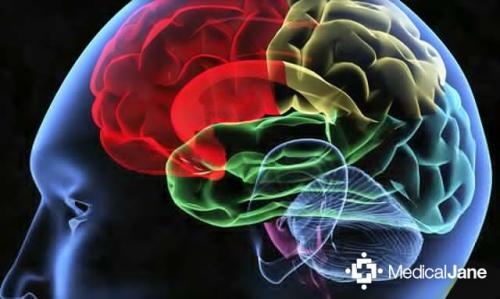

Iron overload disorders are a group of medical conditions that cause the body to store excess iron. They include hereditary hemochromatosis, a genetic condition in which a person’s body absorbs too much iron from foods and drinks.
The body cannot excrete excess iron, so it stores it in certain organs, notably the liver, heart, and pancreas, which can lead to organ damage. Damage to the pancreas can cause diabetes. Excess iron can, without treatment, also turn the skin a bronze color.
With treatment, people with this condition have a good outlook. Treatments may include drawing blood to reduce the body’s iron levels and making dietary changes to reduce iron intake.
In this article, we look at the types, causes, symptoms, and treatment of iron overload disorder.
What are iron overload disorders?
In a healthy body, when the stores of iron are sufficient, the intestines reduce the absorption of this mineral from food and drink to prevent its levels from rising too high.
People with iron overload disorders absorb more iron than usual from food or supplements. The body cannot excrete the extra iron fast enough, so it continues to build up. The body stores it in organ tissue, mainly in the liver, as well as the heart and the pancreas.
There are several types of iron overload disorder. Hereditary hemochromatosis is a primary condition that has a genetic component. People can also have secondary hemochromatosis, which develops as a result of another disease or condition.
Causes
There are several types of iron overload disorder, each with different causes:
Primary hemochromatosis: A genetic mutation
Hereditary hemochromatosis, which people may also refer to as primary or classic hemochromatosis, is one of the most common genetic conditions in the United States. Not everyone with the condition experiences symptoms.
This condition mostly affects white people. According to a 2018 studyTrusted Source, about 1 in 200 Caucasian people in the United States and Australia have hereditary hemochromatosis, and 10–14% of each of these populations carry the genetic mutations.
Hereditary hemochromatosis occurs due to a mutation in a gene called HFE. This gene controls the amount of iron that the body absorbs. Two possible mutations in the HFE gene are C282Y and H63D.
In the U.S., most peopleTrusted Source with inherited hemochromatosis have inherited two copies of C282Y, one from the mother and the other from the father. A person who inherits just one faulty gene is not certain to develop iron overload syndrome, but they will be a carrier, and they will probably absorb more iron than normal.
If both parents are carriers, there is a 1 in 4 chanceTrusted Source that their child will have two faulty genes, one from each parent. However, some people with two copies of the C282Y mutation never experience symptoms.
Some people inherit one C282Y mutation and one H63D mutation. A small proportion of these people will develop hemochromatosis symptoms. Inheriting two copies of H63D is rare, and research has not yet confirmed whether this may increase the risk of hemochromatosis.
Secondary hemochromatosis: The result of a condition
According to the National Heart, Lung, and Blood Institute (NHLBI)Trusted Source, secondary hemochromatosis can result from some kinds of anemia, such as thalassemia, or chronic liver disease, such as chronic hepatitis C infection or alcohol-related liver disease.
Blood transfusions, taking oral iron pills, or having iron injections or long-term kidney dialysis can also cause secondary hemochromatosis.
Juvenile hemochromatosis
Juvenile hemochromatosis is an inherited condition that results from defects in a gene called HJV. Iron builds up earlier in life, and symptoms appear between the ages of 15 and 30Trusted Source years.
Symptoms include diabetes and problems with sexual development. Without treatment, it can be fatal.
Neonatal hemochromatosis
In newborns with neonatal hemochromatosis, iron can accumulate so fast in the liver that the infant is either stillborn or does not survive long after birth. Research suggestsTrusted Source that the cause is not genetic. It may happen because the mother’s immune system produces antibodies that damage the fetal liver.
Risk factors
The following risk factors may increase a person’s likelihood of having hemochromatosis:
Genetic factors: Having two copies of a faulty HFE gene is the main risk factor for hereditary hemochromatosis. The person inherits one copy of the mutated HFE gene from each parent. H refers to high, and FE means iron.
Family history: A person with a parent, child, brother, or sister with hemochromatosis is more likely to have it.
Ethnicity: According to the NHLBITrusted Source, Caucasian people of Northern European descent have a higher risk of having the HFE gene mutation and of developing hemochromatosis. They note that it is less common in people of African
American, Hispanic, Asian, and American Indian descent.
Gender: Iron overload affects both males and females, although it may have a less significant effectTrusted Source on females. The reason for this is that most females regularly lose blood during menstruation, and blood loss reduces iron levels. Males may develop symptoms at the age of about 40–60 yearsTrusted Source, and females may have symptoms after menopause.
Symptoms
The signs and symptoms of iron overload disorder are often mild, and a 2019 sourceTrusted Source reports that in 3 out of 4 cases, people with iron overload show no symptoms.
Signs usuallyTrusted Source do not appear until middle age or, in females, after menopause. Nowadays, people with hemochromatosis are less likely to develop symptoms because diagnosis tends to take place earlier than it did in the past.
If the condition advances, the main symptoms include:
tiredness or fatigue
weakness
weight loss
abdominal pain
high blood sugar levels
hyperpigmentation, or the skin turning a bronze color
a loss of libido, or sex drive
in males, reduction in the size of the testicles
in females, reduced or absent menstruation
In time, the following conditions may develop:
arthritis
liver disease or cirrhosis (permanent scarring) of the liver
enlargement of the liver
diabetes
hypothyroidism
heart disease
pancreatitis
Diagnosing hemochromatosis
Hemochromatosis can be difficult to diagnose from the symptoms as these can overlap with the symptoms of other conditions. A doctor may decide to refer the person to a hepatologist (a liver specialist) or a cardiologist (a heart specialist).
Some tests can help doctors diagnose hemochromatosis. These include blood tests, liver tests, MRI scans, and genetic testing.
Two different types of blood test can detect iron overload, even before symptoms appear.
The serum transferrin saturation test measures the amount of iron bound to transferrin — a protein that carries iron in the blood. Saturation values of more than 45%Trusted Source are too high.
The serum ferritin test measures the amount of iron that the body has stored. Knowing these levels helps a doctor diagnose a person and monitor them during treatment.
Doctors need to perform both blood tests, and they may need to repeat them for increased accuracy, as other conditions can also raise ferritin levels.
These are not routine blood tests, and doctors usually only perform them if someone has a parent, child, or sibling with hemochromatosis.
However, people may also undergo these tests if they have any of the following signs, symptoms, and conditions:
diabetes
elevated liver enzymes
erectile dysfunction
extreme tiredness
heart disease
joint disease
In people who consume excessive amounts of alcohol or those who have had many blood transfusions or hepatitis C, the results of these blood tests may suggest iron overload.
These additional tests can help confirm a diagnosis of hereditary hemochromatosis:
genetic testing can determine whether the person carries the HFE gene.
MRI scans to check iron levels in the liver
a liver biopsy can determine iron levels in the liver and reveal any cirrhosis or other damage, but this test is less common nowadays.
Medically reviewed by Natalie Butler, R.D., L.D.
Written by Yvette Brazier
on January 30, 2020
Healthy Brain and Body
